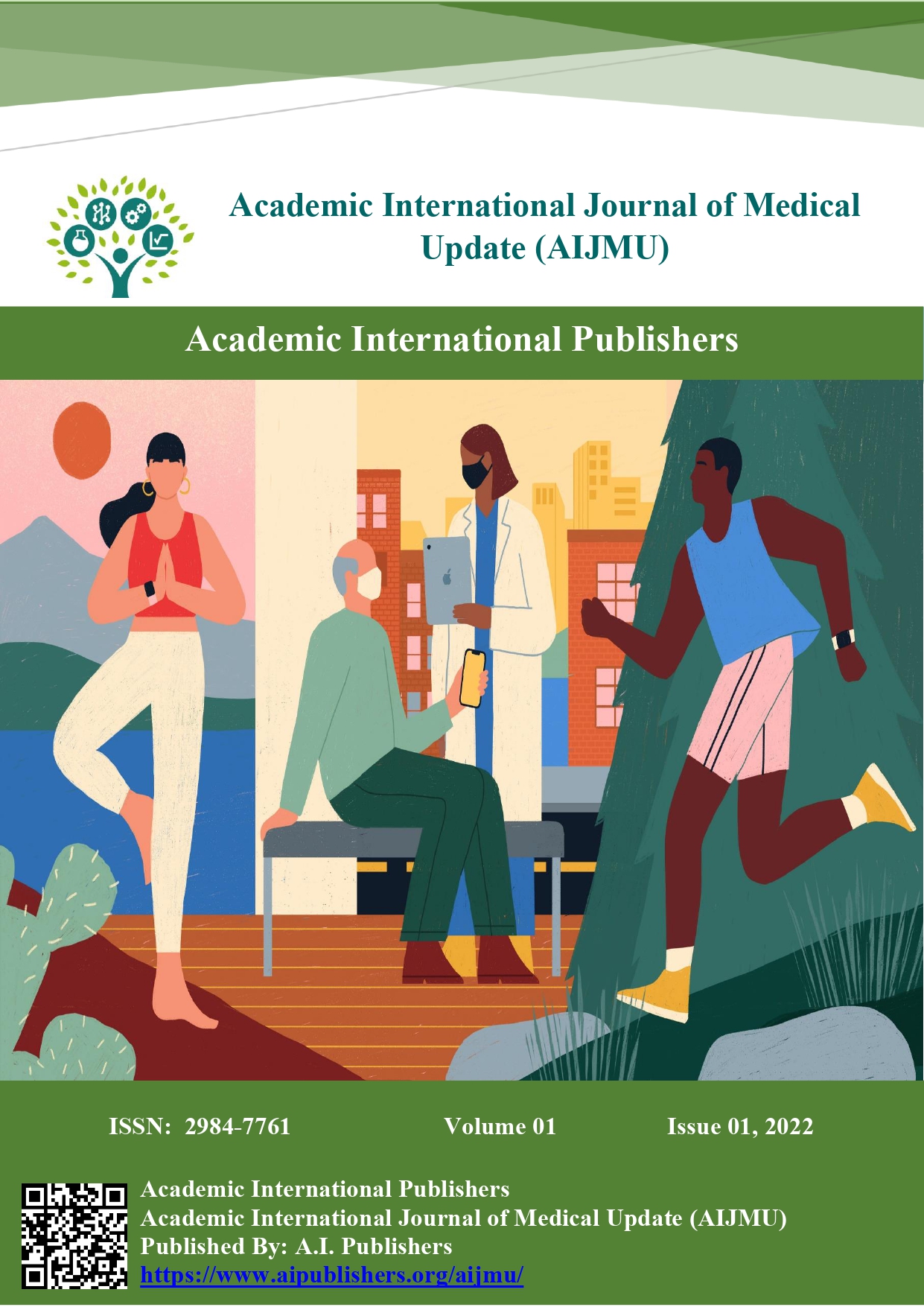The Impact of Enhanced Recovery After Surgery (ERAS) Protocols in Colorectal Cancer Surgery
DOI:
https://doi.org/10.59675/U123Keywords:
ERAS, Protocols, Colorectal CancerAbstract
Background: Surgery represents the main treatment for patients diagnosed with colorectal cancer, but it may also be associated with severe complications, longer recovery periods, and poorer oncologic outcomes. The chance to perform surgery in a more quiescent patient could provide extremely interesting results. That's where the ERAS programs find their rationale.
Materials and Methods: We reviewed studies available in the literature between January 1, 2010, and February 28, 2021, referring to the effectiveness of the ERAS programs specifically in the surgical field dedicated to colorectal cancer.
Results: ERAS protocols, associated with surgery, are now well established. Several known medical complications, severe pain, and a slower return of motor functions after surgery seem to be the most distressing issues on patient recovery paths. Aiming to resolve these problems, several evidence-based strategies seem to be able to outdo these scenarios, helping to create a magical synergy, thanks to which the employed synergic measures would lead to a better, less painful, and less complicated patient journey.
Conclusions: The ERAS approach seems to be able to significantly reduce the length of stay, medical costs, disability, pain, and physiological stress responses, through the improved delivery of a range of integrated, evidence-based interventions aimed at providing value for the patients, hospital organization, and healthcare system, providing benefits for both patients and hospitals, from the human and economic point of view.
Downloads
References
Tamang T, Wangchuk T, Zangmo C, Wangmo T, Tshomo K. The successful implementation of the Enhanced Recovery After Surgery (ERAS) program among caesarean deliveries in Bhutan to reduce the postoperative length of hospital stay. BMC Pregnancy Childbirth. 2021 Dec;21:1-7. DOI: https://doi.org/10.1186/s12884-021-04105-9
Barbero M, García J, Alonso I, Alonso L, San Antonio-San Román B, Molnar V, León C, Cea M. ERAS protocol compliance impact on functional recovery in colorectal surgery. Cir Esp (Engl Ed). 2021 Feb;99(2):108-14. DOI: https://doi.org/10.1016/j.cireng.2021.01.014
Hong M, Ghajar M, Allen W, Jasti S, Alvarez-Downing MM. Evaluating implementation costs of an Enhanced Recovery After Surgery (ERAS) protocol in colorectal surgery: a systematic review. World J Surg. 2023 Jul;47(7):1589-96. DOI: https://doi.org/10.1007/s00268-023-07024-2
Tan JKH, Ang JJ, Chan DKH. Enhanced recovery program versus conventional care after colorectal surgery in the geriatric population: a systematic review and meta-analysis. Surg Endosc. 2021. DOI: https://doi.org/10.1007/s00464-020-07673-7
Meillat H, Brun C, Zemmour C, de Chaisemartin C, Turrini O, Faucher M, Lelong B. Laparoscopy is not enough: full ERAS compliance is the key to improvement of short-term outcomes after colectomy for cancer. Surg Endosc. 2020 May;34:2067-75. DOI: https://doi.org/10.1007/s00464-019-06987-5
Röttinger H. The Idea of “Minimally Invasive Solution” Total Hip Arthroplasty: History and Perspective Behind the Modernization of Surgery Through the Watson-Jones Muscle Interval. In: The Anterior-Based Muscle-Sparing Approach to Total Hip Arthroplasty. Cham: Springer International Publishing; 2022 Jul 27. p. 1-13. DOI: https://doi.org/10.1007/978-3-031-02059-9_1
Kehlet H. Enhanced recovery after surgery. Dan Med J. 2022. Available from: https://ugeskriftet.dk
Greer NL, Gunnar WP, Dahm P, Lee AE, MacDonald R, Shaukat A, Sultan S, Wilt TJ. Enhanced recovery protocols for adults undergoing colorectal surgery: a systematic review and meta-analysis. Diseases of the Colon & Rectum. 2018 Sep 1;61(9):1108-18. DOI: https://doi.org/10.1097/DCR.0000000000001160
Tweed TT, Woortman C, Tummers S, Bakens MJ, van Bastelaar J, Stoot JH. Reducing hospital stay for colorectal surgery in ERAS setting by means of perioperative patient education of expected day of discharge. Int J Colorectal Dis. 2021 Jul;36(7):1535-42. DOI: https://doi.org/10.1007/s00384-021-03948-0
Jiang WZ, Xu JM, Xing JD, Qiu HZ, Wang ZQ, Kang L, Deng HJ, Chen WP, Zhang QT, Du XH, Yang CK. Short-term outcomes of laparoscopy-assisted vs open surgery for patients with low rectal cancer: the LASRE randomized clinical trial. JAMA Oncol. 2022 Nov 1;8(11):1607-15.
Ljungqvist O, de Boer HD, Balfour A, Fawcett WJ, Lobo DN, Nelson G, Scott MJ, Wainwright TW, Demartines N. Opportunities and challenges for the next phase of enhanced recovery after surgery: a review. JAMA Surg. 2021 Aug 1;156(8):775-84. DOI: https://doi.org/10.1001/jamasurg.2021.0586
Gillis C, Ljungqvist O, Carli F. Prehabilitation, enhanced recovery after surgery, or both? A narrative review. Br J Anaesth. 2022. DOI: https://doi.org/10.1016/j.bja.2021.12.007
Olson KA, Fleming RD, Fox AW, Grimes AE, Mohiuddin SS, Robertson HT, Moxham J, Wolf Jr JS. The enhanced recovery after surgery (ERAS) elements that most greatly impact length of stay and readmission. Am Surg. 2021 Mar;87(3):473-9. DOI: https://doi.org/10.1177/0003134820951440
Schwenk W. Optimized perioperative management (fast-track, ERAS) to enhance postoperative recovery in elective colorectal surgery. GMS Hyg Infect Control. 2022.
Amato B, Compagna R, De Vivo S, Rocca A, Carbone F, Gentile M, Cirocchi R, Squizzato F, Spertino A, Battocchio P. Groin surgical site infection in vascular surgery: systemic review on peri-operative antibiotic prophylaxis. Antibiotics (Basel). 2022 Jan 20;11(2):134. DOI: https://doi.org/10.3390/antibiotics11020134
Bisch SP, Nelson G. Outcomes of enhanced recovery after surgery (ERAS) in gynecologic oncology: a review. Curr Oncol. 2022. DOI: https://doi.org/10.3390/curroncol29020056
Toh JW, Collins GP, Pathma-Nathan N, El-Khoury T, Engel A, Smith S, Richardson A, Ctercteko G. Attitudes towards Enhanced Recovery after Surgery (ERAS) interventions in colorectal surgery: nationwide survey of Australia and New Zealand colorectal surgeons. Langenbecks Arch Surg. 2022 Jun;407(4):1637-46. DOI: https://doi.org/10.1007/s00423-022-02488-7
Fulop A, Lakatos L, Susztak N, Szijarto A, Banky B. The effect of trimodal prehabilitation on the physical and psychological health of patients undergoing colorectal surgery: a randomised clinical trial. Anaesthesia. 2021 Jan;76(1):82-90. DOI: https://doi.org/10.1111/anae.15215
Downloads
Published
Issue
Section
License
Copyright (c) 2023 Academic International Journal of Medical Update

This work is licensed under a Creative Commons Attribution 4.0 International License.


